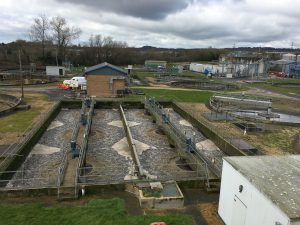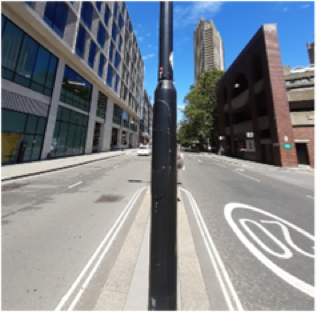Odour Assessment of Sewage Treatment Works
29-05-2019
Last updated 13-05-2024

Phlorum has undertaken many odour assessments where the smell from sewage treatment is a concern. This has involved the assessment of impacts from existing sewage treatment works where new housing is proposed nearby and the assessment of odours from treatment works in relation to improvement works or other changes that affect how utilities companies operate them.
How is Smell Measured?
Odour nuisance is a funny thing. Being offended by an unpleasant odour is down to how our brains interpret the smell of things – ‘smell’ being a subjective human sense (or perception) of our environment, rather than an objectively measurable quantity. As such, odour nuisance is quite a difficult thing to measure, both in terms of the concentration and character of the odour being investigated.
Some approaches attempt to score the potential for an odour to cause a nuisance, which is a function of the source characteristics and the exposure context (e.g. how susceptible or sensitive the exposed person or people is/are). A particularly useful method that contextualises the significance and/or offensiveness of an odour is the FIDOL rating, where the letters correspond to: Frequency; Intensity; Duration; Unpleasantness; and Location. Within this method is the system of scoring an odour’s character based on its ‘hedonic tone’, whereby a smell like fresh bread is scored much higher, in terms of its pleasantness, than a typical sewage treatment odour, which is obviously quite nasty.
Seasonal Impacts on Odour Nuisance
Meteorological and seasonal conditions can also have a marked effect on the strength of odours and their potential to cause a nuisance. For sewage treatment works, summertime can be a particularly sensitive period. This is for the following reasons:
- Reduced rainfall means that sewage can become concentrated in the treatment process, and hence become more ‘smelly’;
- Warmer weather can increase the biochemical process of sewage putrefying; and
- Local residents are more likely to leave their windows open or be outside where they are more likely to notice sewage smells.
Odour impacts, as well as those for other types of pollution, follow the linkage concept of source, pathway, receptor. This means that you need all three for an impact to occur. Conversely, if the linkage can be broken by mitigation measures, then this will stop an odour impact occurring. Breaking the linkage could be achieved by removing the pathway by enclosing the source (e.g. storing sewage sludge in a sealed silo) or by removing the receptor by preventing public access to the affected area (which is rarely practical but which could include removing access rights from land, or more commonly, using the planning system to prevent residential development close to sewage treatment works).
As assessment of odours from sewage treatment is not straightforward, it often requires careful discussion and agreement with regulators and other stakeholders. With increasing pressure to build housing on land that was previously set aside as ‘cordon sanitaires’ around treatment works, the assessment of sewage odours is increasingly becoming a planning requirement. There is a range of assessment methods that can be employed to determine nuisance risks from sewage odours including ‘sniff-testing’, odour panels, olfactometry, collection of emissions factors and detailed air dispersion modelling.
Whatever your concerns about odours from sewage treatment might be, Phlorum can assist. We have experience of working for operators of treatment works and for developers wanting to build close to potential sources of nuisance odours.
Contact our experienced air quality consultants for a chat so that we can understand your concerns and help you resolve your sewage odour issues.



